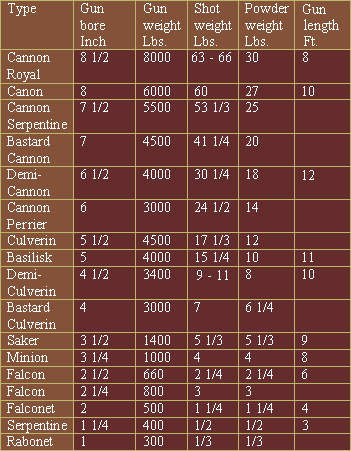Terminology from the Age of Sail
For a custom word search, make your selections below. For an alphabetical listing select Alphabetical Search. Search is NOT case-sensitive. 1. definition or term - term ONLY i.e. oar
will find the definition for oar. |
||
| Advanced Keyword Search
|
||
| Search result for definition: cannon | ||
Cannon: An artillery gun made of bronze, or from the 16th century on more increasingly made of iron and usually mounted on a wheeled gun-carriage. Early ship's cannons often resembled nothing more than a barrel strapped to a plank, later this 'plank' would develop into the full gun-carriage. The angle of elevation could be altered by moving a wooden wedge-like block, the quoin, under the base of the barrel. Its size ranged greatly, from a 4 pounder to a 60 pounder, with 'pounder' meaning the weight of the shot, or ball the cannon fired. In and before the 16th century a cannon was classified according to size, with such names as "cannon-royal", "demi-cannon", "cannon-perier", "culverin", "demi-culverin", "saker", "falcon", "falconet", "minion", "fowler", "base", "bastard" and "murderer". By the 18th century a cannon was classified by the weight of the roundshot it fired. A cannon's muzzle velocity was anywhere between 900 and 1700 fps and a typical cannon had a practical range of 400 to 600 metres. Smoothbore, black-powder cannon remained the dominant naval artillery until the middle of the 19th century.   Note: While a bronze saker would have weighed 1400 - 1600 Lbs, an iron saker would have almost doubled the weight to about 2500 lbs.  | ||
| Cannon-Perier: A ships cannon firing 24 1/2 pound stone or iron shot. | ||
| Cannon-royal: The original designation for a cannon, firing 60-66 pound stone or iron roundshot. |
Concept, content & Design: The Art of Age of Sail